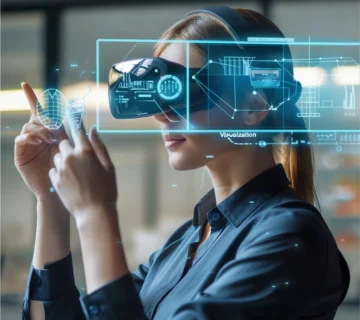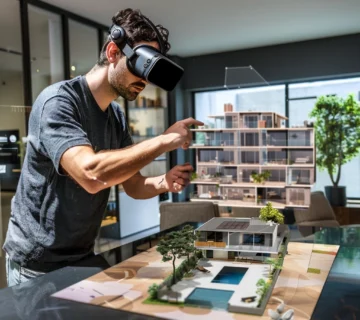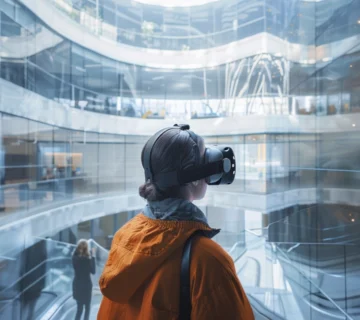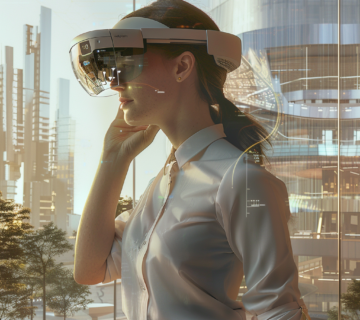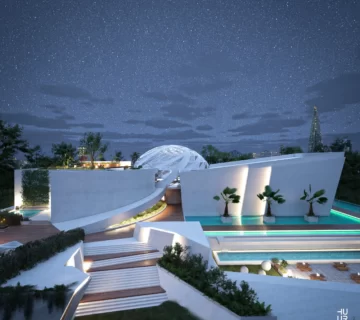Augmented Reality Architectural Visualization Value Transforming Visions into Reality
Introduction:
Augmented Reality Architectural Visualization Value Transforming Visions into Reality .In the dynamic realm of architectural design, the fusion of technology and creativity takes center stage, offering an unprecedented journey from imagination to tangible reality. The title, “Augmented Reality Architectural Visualization Value: Transforming Visions into Reality,” encapsulates the essence of a transformative process where augmented reality becomes the guiding force in bringing architectural visions to life. This exploration delves into the inherent value of augmented reality in architectural visualization, showcasing how this innovative technology transcends traditional boundaries to create immersive and interactive experiences. Join us on a captivating journey where the boundless potential of augmented reality converges with architectural aspirations, paving the way for a new era in design visualization.
“Augmented Reality is revolutionizing how we showcase architectural designs. Implementing AR in presentations and property walkthroughs enhances client experiences. It brings plans to life, offering a real-time overlay of digital information onto the physical world.”[propertyrender].
In the realm of architecture, the integration of technology has ushered in a revolutionary era, and one of the transformative tools at its forefront is Augmented Reality (AR). Augmented Reality Architectural Visualization stands as a powerful force, not merely as a digital embellishment but as a dynamic catalyst that turns conceptual visions into tangible reality.
Augmented reality architectural visualization Design Concepts in Real Time:
Traditionally, the realm of architectural design has been shaped by blueprints, sketches, and 3D models—a static journey into the envisioned spaces. However, Augmented Reality Architectural Visualization represents a paradigm shift, transcending the limitations of conventional methods and propelling design into a dynamic, real-time experience.
Breaking the Static Mold:
Blueprints and static 3D models have long served as crucial tools for architects, providing a visual language for design concepts. However, Augmented Reality (AR) disrupts this static mold, introducing an interactive and immersive dimension to the design process. AR Architectural Visualization allows architects and stakeholders to move beyond passive observation, inviting them to step into the digital realm where designs come to life.
Real-Time Immersion:
The essence of AR lies in its ability to offer real-time, immersive experiences. With AR Architectural Visualization, architects, clients, and stakeholders no longer need to rely on their imagination to visualize a proposed design. Instead, they can step into a projected future where the architectural vision materializes before their eyes. This immersive experience as AR technology solutions goes beyond static representations, providing a holistic view of the design within its intended environment.
Architectural Time Travel:
AR takes architectural visualization beyond the present moment, allowing stakeholders to engage in a form of architectural time travel. By superimposing digital renderings onto the physical world in real time, AR enables individuals to witness the envisioned structure as if it already exists. This temporal shift in perception empowers stakeholders to explore the future space, making decisions based on a tangible and dynamic understanding of the design.
Enhancing Communication:
The dynamic nature of AR Architectural Visualization enhances communication among architects, clients, and stakeholders. No longer confined to interpreting 2D plans or static 3D models, everyone involved can share a common visual language. This shared understanding fosters more effective communication, aligning perspectives and minimizing the potential for misinterpretation. Architects can articulate their vision more vividly, and clients can provide real-time feedback based on an experiential understanding of the design.
Accelerating Decision-Making:
AR not only transforms how designs are communicated but also accelerates the decision-making process. Stakeholders can make informed decisions more efficiently as they witness the design in context of AR development services . This real-time interaction with the proposed space facilitates quicker approvals and adjustments, significantly reducing the time traditionally spent in the iterative cycle of design revisions.
In essence, Augmented Reality Architectural Visualization marks a transformative leap in the way architects and stakeholders engage with design concepts. It’s not just a tool; it’s a portal that propels architectural visualization into the realm of real-time, immersive experiences, where designs cease to be static representations and become vibrant, dynamic visions of the future.
Enhancing Design and Iteration:
Augmented Reality Architectural Visualization transcends the traditional boundaries of architectural design, offering architects a transformative tool that goes beyond static representations. AR empowers architects to step into a realm where digital overlays seamlessly merge with physical spaces, opening a gateway to unparalleled creativity, innovation, and real-time design refinement.
Breaking the Shackles of Static Representations:
The conventional approach to architectural design often involves static representations such as blueprints and 3D models. Augmented reality definition liberates architects from this static paradigm by introducing a dynamic layer to the design process. Instead of relying solely on two-dimensional plans or pre-rendered models, architects can now bring their designs to life through digital overlays that interact with the real-world environment.
Digital Overlays on the Physical Canvas:
AR allows architects to place digital overlays onto physical spaces, creating a harmonious blend between the virtual and the tangible. This integration enables architects to visualize their designs in situ, considering how they interact with existing structures and environments. This dynamic approach fosters a deeper understanding of spatial relationships and design elements, laying the foundation for a more holistic and context-aware design process.
Seamless Visualization and Iteration:
The heart of AR’s transformative power lies in its ability to facilitate real-time visualization and iteration. Architects can virtually position and manipulate digital elements within the physical context, providing an immediate and interactive experience. This iterative process becomes a playground for creativity, as architects can experiment with various design elements, make instant adjustments, and witness the impact of those changes in real time.
Instant Adjustments, Real-Time Impact:
The iterative cycle enabled by AR is a catalyst for innovation. Architects can make instant adjustments to design elements and observe their immediate impact. This real-time feedback loop accelerates the decision-making process, allowing architects to explore multiple design variations efficiently. The result is not just a functional design but one that evolves organically, shaped by the architect’s insights and the responsive dialogue between the envisioned design and its physical surroundings.
Aesthetic Refinement and Functional Excellence:
The ultimate outcome of this dynamic design process is a product that marries aesthetic refinement with functional excellence. AR enables architects to refine the aesthetics of their designs in response to real-world considerations, resulting in spaces that are not only visually appealing but also seamlessly integrated into their surroundings. The harmony achieved through this process ensures that the final design is not just a static representation but a living, breathing entity that responds to the needs of both form and function.
In essence, Augmented Reality Architectural Visualization stands as a beacon of innovation in the architectural realm. By liberating architects from static representations and immersing them in a dynamic, real-time design process, AR becomes a catalyst for transformative and context-aware architectural solutions. The future of architectural design is not just functional or aesthetically pleasing; it’s a harmonious blend of both, shaped by the dynamic interplay between the architect’s vision and the living canvas of the physical world.
Fostering Collaboration: Augmented Reality Architectural Visualization as a Shared Visionary Platform
In the intricate dance of architectural projects, collaboration stands as a cornerstone, intertwining the expertise of architects, the aspirations of clients, the creativity of interior designers, and the precision of construction teams. Augmented Reality Architectural Visualization emerges as the catalyst that transforms collaboration from a series of exchanges into a shared, real-time experience, fostering enhanced communication and a unified vision among stakeholders.
Collaboration in Architectural Projects:
Architectural endeavors are rarely solo performances; they involve a diverse ensemble of professionals, Exterior & interior visualizing in AR, each contributing their unique expertise. Architects, clients, interior designers, and construction teams form a collaborative tapestry, weaving together ideas, requirements, and execution plans. The challenge lies in ensuring that these varied perspectives converge seamlessly to bring a shared vision to life.
AR Architectural Visualization as a Nexus:
Enter Augmented Reality Architectural Visualization—a technology that transforms collaboration into a shared, dynamic experience. This tool becomes a nexus, a common ground where stakeholders can converge, Augmented reality design irrespective of their physical locations. Through AR, they step into a shared virtual space that transcends traditional boundaries, creating an environment where communication is elevated to a new dimension.
Real-Time Interaction with Design:
AR Architectural Visualization provides stakeholders with the ability to view and interact with a proposed design in real time. No longer confined to static representations or abstract blueprints, everyone involved can immerse themselves in the envisioned space. Architects can guide clients through the intricacies of the design, interior designers can visualize their concepts within the context, and construction teams can assess the practicalities—all in a shared, virtual environment.
Fostering Improved Communication:
Communication is the lifeblood of successful collaboration, and AR Architectural Visualization becomes the conduit for enriched dialogue. The immersive nature of AR allows stakeholders to communicate ideas more effectively, transcending the limitations of traditional communication tools. Concepts that may be challenging to convey through words or static images become vivid and comprehensible in the dynamic, shared space of AR.
Everyone Shares a Common Vision:
In the collaborative dance facilitated by Augmented Reality Architectural Visualization, everyone involved shares a common vision. The ability to walk through a design, explore its intricacies, and engage in real-time discussions ensures that misunderstandings are minimized. Clients can articulate their preferences with clarity, architects can address concerns promptly, and the entire team aligns with a unified vision of the final outcome.
In conclusion, Augmented Reality Architectural Visualization acts as a transformative force, turning collaboration from a process into an experience. By providing a shared platform where stakeholders can converge, visualize, and interact with proposed designs in real time, AR elevates communication and understanding. The collaborative dance becomes a symphony, where every stakeholder plays their part in creating a harmonious and unified architectural vision.
Improving Stakeholder Collaboration:
The collaborative nature of architectural projects involves multiple stakeholders, including architects, clients, interior designers, and construction teams. Augmented Reality Architectural Visualization becomes a shared platform where these stakeholders can converge, fostering improved communication and understanding. The ability to view and interact with a proposed design in real time ensures that everyone involved shares a common vision.
Addressing Design Challenges:
Architectural projects often encounter challenges related to spatial planning, layout, and aesthetic choices. Augmented Reality Architectural Visualization provides a dynamic solution by offering a comprehensive view of the proposed design within the existing environment. This aids architects in identifying potential challenges and making informed decisions that optimize both form and function.
Streamlining the Decision-Making Process:
The traditional approval process for architectural designs can be time-consuming and prone to misunderstandings. Augmented Reality Architectural Visualization expedites decision-making by providing a clear, visual representation of the design. Clients can explore the proposed space, evaluate design elements, and make informed decisions efficiently, leading to a more streamlined and collaborative workflow.
Realizing Efficiency in Construction:
Beyond the design phase, AR continues to add value during construction. AR overlays can assist construction teams by providing visual guidelines, reducing errors, and enhancing accuracy. This ensures that the final built structure aligns precisely with the envisioned design, minimizing the need for costly adjustments during construction.
In conclusion, Augmented Reality Architectural Visualization stands as a transformative force in the field of architecture. By seamlessly integrating digital elements with physical spaces, AR goes beyond embellishment to become an invaluable tool for architects and stakeholders alike. As we embrace this technology, we witness the metamorphosis of architectural visions into tangible reality, shaping a future where design innovation knows no bounds.


Augmented Reality Architectural Visualization: A Dynamic Canvas for Design Innovation
In the ever-evolving landscape of architectural design, Augmented Reality (AR) emerges as a transformative force, breaking free from the constraints of static representations and providing architects with a dynamic canvas for creativity and innovation. Augmented Reality Architectural Visualization goes beyond traditional methods, allowing architects to seamlessly integrate digital overlays onto physical spaces, unlocking a realm of possibilities that redefine the design process.
Dynamic Overlays on Physical Spaces:
At its core, Augmented Reality Architectural Visualization enables architects to transcend the limitations of static representations. Instead of relying solely on blueprints or traditional 3D models, architects can use AR to superimpose digital overlays onto the physical environment. This dynamic overlay becomes a visual bridge between the envisioned design and the actual space, offering a real-time, interactive experience that goes beyond the boundaries of traditional design tools.
Visualizing and Iterating in Real Time:
One of the key strengths of AR lies in its capacity to facilitate the real-time visualization of design elements. Architects can virtually place and manipulate digital elements within the existing physical environment, allowing them to visualize the impact of each design choice instantly. This capability fosters an iterative process where architects can make immediate adjustments and witness the evolution of their design in real time.
Seamless Iterative Process:
The iterative nature of Augmented Reality Architectural Visualization becomes a catalyst for creativity and innovation. Architects are no longer bound by a linear design process; instead, they can experiment, refine, and iterate on design elements seamlessly. The ability to make instant adjustments and observe their impact empowers architects to explore unconventional ideas and push the boundaries of traditional design, resulting in solutions that are not only functional but also aesthetically refined.
Instant Adjustments and Real-Time Impact:
In the world of architectural design, time is a precious commodity. AR streamlines the design process by enabling architects to make instant adjustments and witness their impact in real time. This instantaneous feedback loop accelerates decision-making, allowing architects to efficiently navigate through design variations. The result is a design that evolves organically, shaped by real-time insights and a continuous dialogue between the architect and the envisioned space.
In conclusion, Augmented Reality Architectural Visualization is more than a technological tool; it’s a paradigm shift in how architects conceive, visualize, and refine their designs. By providing a dynamic canvas for experimentation and real-time adjustments, AR empowers architects to transcend the static confines of traditional representation. The architectural process becomes a journey of exploration, where creativity flourishes, and innovation becomes an integral part of shaping the built environment.
Conclusion: Augmented Reality Architectural Visualization Redefining Collaboration
In the ever-evolving realm of architectural design, the advent of Augmented Reality Architectural Visualization has ushered in a new era of collaboration. This technology transcends the traditional boundaries of communication, offering a shared visionary platform where architects, clients, interior designers, and construction teams converge in real-time, fostering a unified understanding and vision.
The collaborative dance within architectural projects, once marked by disparate perspectives and static representations, now transforms into a dynamic symphony. Augmented Reality Architectural Visualization serves as the nexus—a virtual space where stakeholders, regardless of physical distances, immerse themselves in a shared environment. This immersive experience goes beyond conventional communication tools, allowing stakeholders to interact with proposed designs in real time.
The real-time interaction with designs provided by AR Architectural Visualization becomes a catalyst for improved communication. Concepts that were once challenging to convey through words or static images now come to life in the dynamic space of AR. Architects guide clients through intricacies, interior designers visualize concepts within the context, and construction teams assess practicalities—all within this shared, virtual environment.
What emerges is a common vision shared by all involved parties. The ability to walk through a design, explore its nuances, and engage in real-time discussions minimizes misunderstandings. Augmented Reality Architectural Visualization aligns the entire team with a unified understanding of the final outcome. It becomes a transformative force, turning collaboration into an experiential journey where creativity flourishes and innovation thrives.
In the final act of this collaborative symphony, Augmented Reality Architectural Visualization stands as a testament to the power of technology in shaping the future of architectural design. The shared platform it provides goes beyond facilitating communication; it fosters an environment where every stakeholder plays a vital role in creating a harmonious and unified architectural vision. As the curtain falls on traditional collaboration methods, AR Architectural Visualization takes center stage, redefining how architectural projects unfold and visions come to life.





